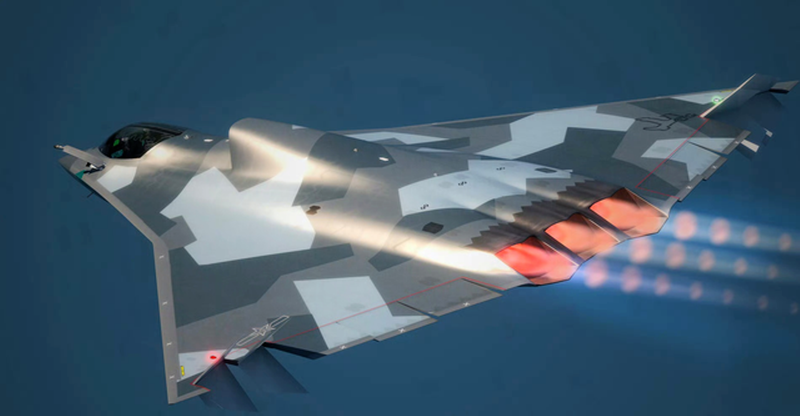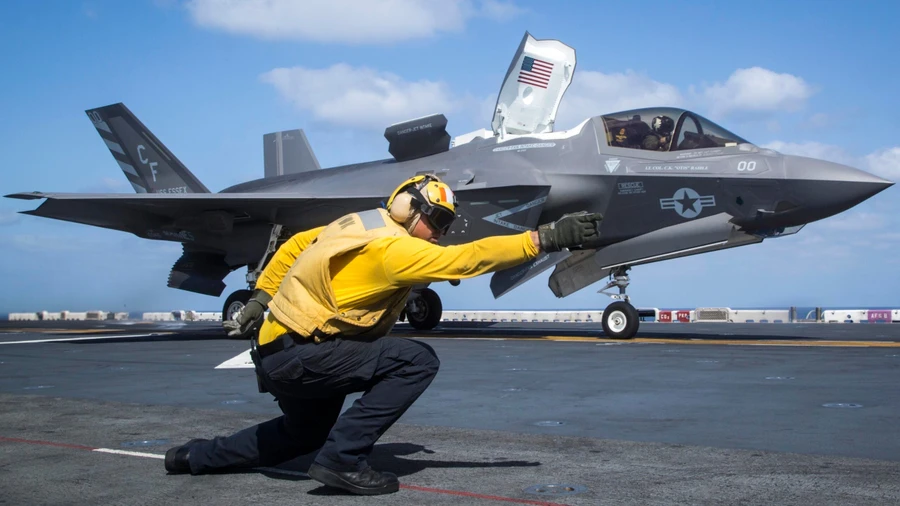Washington, D.C. — In a bold move that may redefine global air superiority, the United States Air Force has officially moved ahead of global rivals—particularly China—with its covertly developed F-47, a sixth-generation fighter jet so advanced, it makes its legendary predecessor, the F-22 Raptor, look like history.

This stunning revelation comes as part of the Air Force’s Next Generation Air Dominance (NGAD) program—a multi-billion-dollar initiative to maintain U.S. supremacy in aerial warfare well into the 21st century. Behind the scenes, aerospace titan Boeing clinched a high-stakes contract over industry heavyweights Lockheed Martin and Northrop Grumman to build what is now being called the most powerful fighter ever conceived.
But here’s the real shocker: The F-47 has reportedly been flying in secret for over five years, according to sources aligned with a 2020 Air Force statement confirming NGAD had already begun test flights. The veil is finally lifting—and what’s underneath is nothing short of revolutionary.
F-47: The Brain of the Battlefield
Unlike anything the world has seen, the F-47 isn’t just a jet—it’s a central AI-powered command node in a fully integrated combat ecosystem. Capable of operating alongside autonomous drones, hypersonic weapons, and even laser systems, the F-47 sets the stage for a future where manned and unmanned warfighters operate in perfect sync.
This futuristic war machine is stealthier, faster, and smarter than its predecessors. Sporting a tailless design for radar evasion, cutting-edge canards for agility, and adaptive propulsion engines pushing over 40,000 lbs of thrust, the aircraft rockets past Mach 2 with ease. It offers a combat radius of more than 1,500 miles, and yes—it comes in both piloted and unmanned configurations.
Armed with hypersonic missiles, drone swarms, and soon directed energy weapons, the F-47 feels like it’s leapt out of science fiction. But it’s real. And it’s here.
China’s Response: A Mirage of Progress?
Not to be outdone, China has been aggressively advancing its own sixth-generation programs—albeit behind a thick curtain of secrecy. In late 2023, video footage surfaced over Chengdu showing two new stealth jets in flight. Analysts believe these are the J-36 and the J-50, part of two separate—but possibly parallel—stealth fighter efforts from Chengdu and Shenyang Aircraft Corporations.

While visually impressive and adopting a similar tailless “flying wing” design to the F-47, the similarities may end there.
Despite their advancements, Chinese jets still lag in one critical area: systems integration. Where the U.S. Air Force is building a “combat internet” of jets, drones, and real-time battlefield intelligence, China’s platforms remain tactically local and digitally disconnected. Without this backbone, experts argue that Beijing’s fleet—no matter how fast or stealthy—lacks the neural network required to dominate modern warfare.
A Legacy of Dominance: From F-22 to F-35
The F-47 will soon join the elite ranks of American air power. It follows in the wake of the legendary F-22 Raptor, the world’s first fifth-generation stealth fighter, and the multi-role powerhouse F-35 Lightning II—which has racked up over 1,000 units deployed across U.S. and allied forces.
The F-35 changed the game with its sensor fusion, stealth, and software-driven battlefield awareness. Its mission systems contain over 8.6 million lines of code, with Block 4 upgrades pushing technological boundaries even further. Lockheed Martin is even working to give the F-35 80% of the F-47’s capabilities—at half the cost.
Meanwhile, China’s answer, the J-35 (also known as FC-31), is still in developmental limbo. Despite debuting a land-based variant in 2023, its combat readiness remains questionable. Allegations of cyber espionage suggest stolen U.S. tech may have accelerated China’s program—but not enough to surpass the real deal.
The Bottom Line: Is China Catching Up? Yes. But It’s Not There Yet.

While Beijing is sprinting toward sixth-gen air power, the U.S. remains a generation ahead, not only in aircraft design but in combat philosophy. With its emphasis on network-centric warfare, unmanned autonomy, and digital dominance, the F-47 doesn’t just counter Chinese jets—it potentially renders them obsolete.
The race for aerial supremacy is no longer about who can fly faster or stealthier. It’s about who can think faster, connect deeper, and strike first without being seen.
And right now, that race has a clear frontrunner: the United States.
Up Next: With Boom Supersonic promising commercial travel at Mach 1.7, is the future of civilian air travel catching up with military tech? Stay tuned for our deep dive into the battle for the skies—both in war and in peace.





